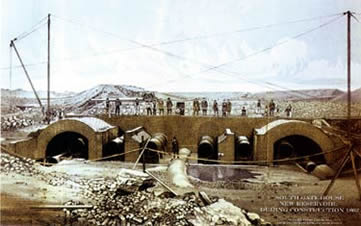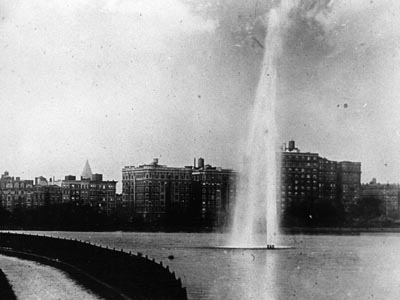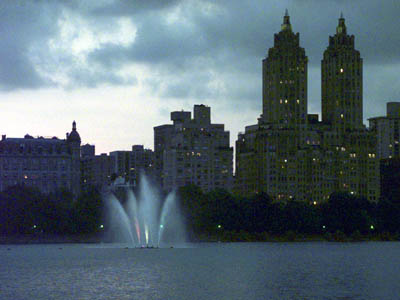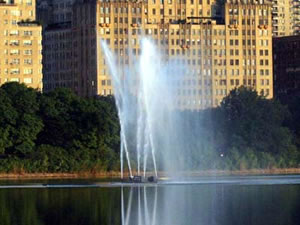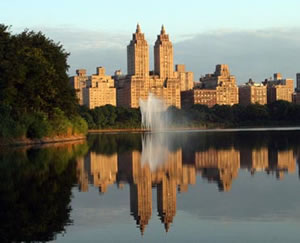FOR IMMEDIATE RELEASE03-39a July 18, 2003 Contact: Charles G. Sturcken (718) 595-6600 DEP Activates Historic Fountain In Central Park Reservoir To Commemorate 150th Anniversary Of Central Park
Commissioner Christopher O. Ward announced today that at 6:15 AM DEP is activating the decorative fountain long submerged 38 feet beneath the waters of the Central Park Reservoir. This will be only the third time in its history that the fountain has been activated.
“Turning on the fountain will not only highlight the Park’s anniversary,” said Commissioner Ward, “but will also be an entertainment and aesthetic enhancement for City residents who jog, walk, bike, picnic, bird watch and enjoy the plants and wildlife they see on and around the reservoir.” Initially activated in October 1917, the fountain was built to celebrate the completion of the Catskill water supply system’s newly built reservoir – the Ashokan Reservoir, and the dedication of the City’s first water tunnel – an 18-mile tunnel built to transport drinking water from the Catskills to the Hillview Reservoir in the Bronx, and from there to homes in Manhattan, Brooklyn and the Bronx.
In August 1998, as the City planned a full-day celebration to commemorate activation of Stage 1 of City Tunnel No. 3 at the Central Park Reservoir, long buried photographs of the 1917 ceremony and the fountain spray were uncovered. Deep sea divers were lowered into the Reservoir to try and locate the fountain to see if it could be reactivated to follow upon the historic significance of the 1917 ceremony. The successful search uncovered the fountain, along with five rusty nozzles and its original platform. After some sprucing up and retrofitting, on August 13, 1998, the fountain in the Central Park Reservoir was returned to service for the second time.
Now, for the third time as part of another important City celebration, the fountain, with its five nozzles spraying up to 60 feet in the air, has been set in motion. The fountain will also be illuminated after dark. The Central Park Reservoir was renamed the Jacqueline Kennedy Onassis Reservoir in 1994, after the widow of the late President John F. Kennedy and Greek shipping magnate Aristotle Onassis. When originally constructed in 1862 it was called Lake Manahatta. It served as additional storage for the nearby 35-acre Yorkville Reservoir built by the City as a distributing reservoir for the Croton water supply system, New York’s first out-of city water supply system located in Westchester County.
The Yorkville Reservoir was removed from service in 1890. In the 1930s it was filled in to become Central Park’s Great Lawn. Lake Manahatta or the Central Park Reservoir with its north and south gatehouses, became the source water of the Croton system in Manhattan. The Central Park Reservoir can hold 1 billion gallons of drinking water. It was taken out of service in 1993 and placed on standby. Today the Central Park Reservoir plays an important role in the City’s ecology. Woodchucks, turtles, waterfowl – including the rare double-breasted cormorants - and many fish species make the Reservoir home. Plant life such as cattails, sumac, maples and elms, as well as cherry trees that were a gift from the Japanese, are also visible around the Reservoir.
| ||||||||||||
